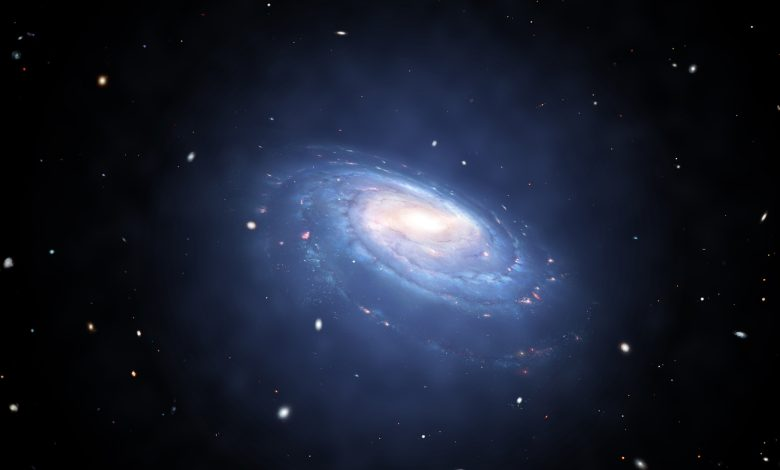Discover the original core around which all the stars and planets in the Milky Way grew
Astrophysicists investigating the origins of the Milky Way may have discovered the "old core" of our galaxy, the ancient original core around which all the stars and planets in the galaxy grew. A group of 18,000 of the oldest stars in our galaxy are located in the constellation Sagittarius (the constellation of Sagittarius), which is a primordial Milky Way, a primordial mass of gas and dust that formed the first stars of a small galaxy, more than 12.5 billion years old.
The scientists found that the cluster represents an estimated 0.2% of the total mass of our galaxy, and is the core around which the Milky Way eventually grew.
Although these results have been published since September 8 in the journal arXiv, they have not yet been reviewed to determine their accuracy.
To discover the primordial group of stars, astronomers relied on data from the European Space Agency's (ESA) Gaia Observatory, a 1,630kg spacecraft launched in 2013 to create the most detailed and accurate map of the Milky Way.
"It has long been believed (based on theory and simulation) that the oldest stars are located in the heart of the galaxy," astronomer at the Max Planck Institute for Astronomy in Heidelberg, Germany, Hans Walter Rex, told Live Science. We have now shown that they are there in large numbers. It's like using archeology in an ancient city.
We have shown that the oldest and most primitive monuments are located in the center of the modern city.
Finding the ancient core of our galaxy began with a search for a tiny percentage of stars the same age as the Milky Way, about 13 billion years, in the most crowded region, the galactic bulge (the central group of stars).
To spot this small group - which is like looking for a needle in a haystack - the scientists examined data collected from Gaia from two million stars located 30 degrees from the galactic center, looking for stars with lower masses, longer lives and lower metal content.
Stars matching this description were born in conditions of a much smaller universe that was not yet filled with the widely dispersed heavy metals caused by supernova explosions.
But that's only half the story, as metal-poor stars within the Milky Way may also have come from smaller dwarf galaxies that have crashed and merged into our galaxy throughout their lives.
By examining the paths of these stars through space while retaining only those that did not veer into the metal-poor regions of the galaxy, the scientists were able to separate the stars that make up the ancient core from the stars that originated in the dwarf galaxy.
This left scientists some of the original structures of the stars around which the Milky Way grew — an estimated 50 million to 200 million times the mass of our sun.
And because heavier stars die faster than younger stars, the remaining stars are on average about 1.5 times lighter than the sun, according to the scientists.
"These stars make up about half of the total stellar mass when they are born," Rex said. So, about half of the stars from the protogalactic galaxy remain so far.”
Scientists' examination of the old, bare core of the Milky Way revealed two things: First, because the stars of the ancient primordial galaxy orbit less around the center of the galaxy than younger stars, it confirms previous observations that the core of the Milky Way began its life stationary, and eventually gained speed in rotation as the galaxy's center of mass grows.
Second, despite multiple mergers with smaller galaxies, the close clusters of stars in the center of the Milky Way suggest that its core has not been invaded by collisions from other galaxies.
Rex revealed that "the Milky Way has never been significantly affected. Our galaxy has lived a protected life.”
With further study, the team hopes that the ancient core of the galaxy can teach them more about the early years of the Milky Way, such as the types of supernovae that must have exploded during their creation to produce the early chemical element ratios we see today.
Source: websites


